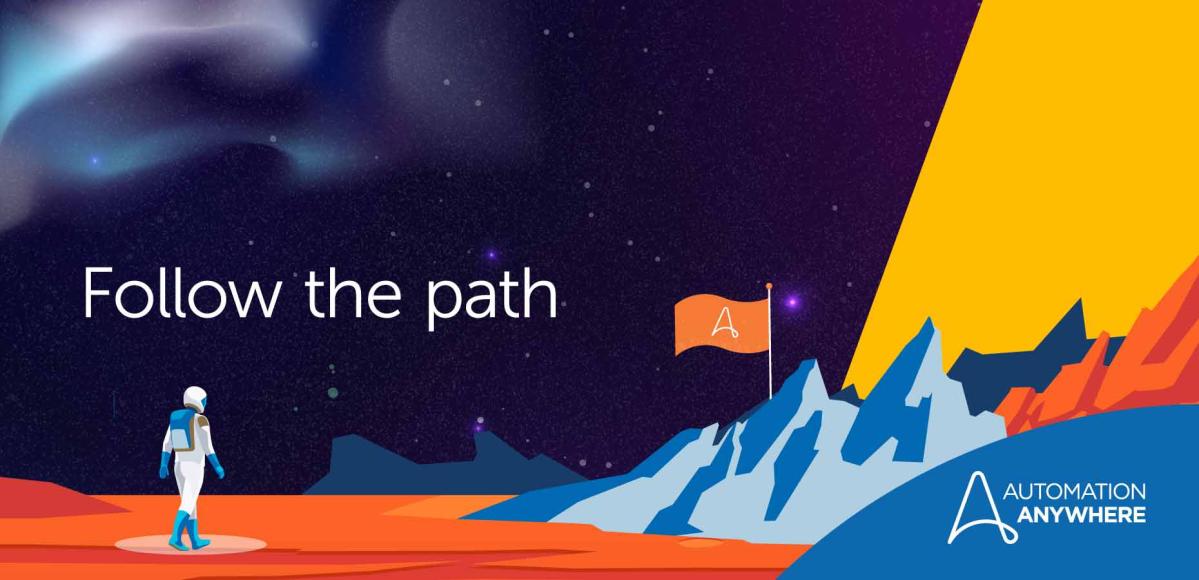- Products
Automate any process, anywhere Streamline complex, mission-critical workflows with the Agentic Process Automation System. Explore the Platform Explore the Platform
- AI System
- Build AI Agents
Automate advanced tasks with AI Agent Studio.
- Streamline workflows
Rapidly design and deploy with Automator AI.
- Process complex documents
Extract and organize data with Document Automation.
- Discover opportunities
Identify inefficiencies with Process Discovery.
- Orchestrate automations
Centralize initiatives with Automation Workspace.
- Build AI Agents
- Automation System
- Govern programs
Establish frameworks and oversight with CoE Manager.
- Automate from any app
Get AI-powered assistance with Automation Co-Pilot.
- Speed workflows with cloud
Power instant data exchange with serverless Automation Anywhere Cloud Service
- Unify systems
Connect applications and workflows with seamless integrations.
- Govern programs
- View all Products
-
- Solutions
Featured Solutions
 Google Cloud Google Cloud and Automation Anywhere empower enterprises to fast-track their AI + Automation journey. Google Cloud
Google Cloud Google Cloud and Automation Anywhere empower enterprises to fast-track their AI + Automation journey. Google Cloud Amazon Web Services Streamline workflows, reduce costs, and make automating even easier when you combine the Agentic Process Automation System with AWS Amazon Web Services
Amazon Web Services Streamline workflows, reduce costs, and make automating even easier when you combine the Agentic Process Automation System with AWS Amazon Web Services - Resources
Get Community Edition: Start automating instantly with FREE access to full-featured automation with Cloud Community Edition.
Featured
 Named a 2024 Gartner® Magic Quadrant™ Leader for Automation. Celebrating Six Years of Recognition as a Leader. Download report Download report
Named a 2024 Gartner® Magic Quadrant™ Leader for Automation. Celebrating Six Years of Recognition as a Leader. Download report Download report- Become an Expert
- Developer Tools
- Get Support
- View all resources
-
- Partners
Find an Automation Anywhere Partner Explore our global network of trusted partners to support your Automation journey Find a Partner Find a Partner
- Find a Partner
- For Partners
-
Blog
Seven Steps to Achieve Successful Citizen Development
Navigate to content

Last week, we posted an article on the Automation Anywhere Pathfinder Program and preparing for citizen development. This blog series gives you a taste of the information and advice available through the Pathfinder Program. And this week’s article continues with tips about planning, evangelizing, and training staff to help ensure your citizen development is a success.
Let’s get started
So, you’ve checked the boxes on prerequisites for creating a citizen development program, yes? As a reminder, the prerequisites include making sure you have secured sponsorship for citizen development, identifying people who would make good citizen developers, leveraging the experience of staff who already have automation experience, and establishing a center of excellence. Now what—where do you go from here to help ensure program success?
Define the vision
What are the objectives, key performance indicators (KPIs), coverage, and timeline for the program? Those metrics should reasonable, practical, and attainable within the scope of your organization’s capabilities and priorities.
Evangelize to the business units
What makes sense to automate? Collect automation use cases from the business unit you’re partnering with and secure buy-in from users and leaders.
Generate excitement
Think demos, introductory webinars, and in-person presentations that can be created for:
- Potential citizen developers
- Anyone who could benefit from the program
- People willing to support it
Make participation easy and provide self-service program elements such as Digital Co-Worker templates, best practices, and policy documentation.
Identify your first group of citizen developer candidates
What makes a good candidate? It could be anyone in your organization, from sales executives and payroll administrators to accounts and even external consultants. What they have in common is that they have a deep understanding of a business process or a series of tasks. They’re well-placed to identify new opportunities that improve operational efficiency or enable better customer service. And they have their manager’s support for investing time in learning new skills and serving as an automation ambassador in their business unit. Look for people who are:
- Naturally curious and motivated to innovate
- Willing to create solutions that they need or that their team, department, or customers need
- Already using IT tools in their job
Depending on the company, 5% or more of business users are a perfect fit to be citizen developers.
Establish an automation life cycle
Establish that life cycle for citizen developers, underpinned by strong governance, and best practices. This should include guidance on how to collect ideas and configure governance in Automation 360.
Launch the program and track the benefits
The planning is done. It’s time to get the final buy-in, launch, and start scaling your automation success. Start small—get things in place and working before launching a full-scale effort. Assemble a small team of one to five people who are championing citizen development. Together, they can identify and automate one or more use cases that demonstrate quick, quantifiable value for an organization.
Roll out citizen developer training and enablement
Use in-house learning or what’s available through Automation Anywhere University. You can even reward citizen developers as they complete training, create their first digital co-workers, and hit their targets--or win a Bot Games challenge! Our favorite ways to get started include: Citizen Developer Basics Citizen Developer Practitioner “Beyond AAU”--list of challenges and learning resources.
Learn more
Visit the citizen developer section on our Pathfinder Program pages.
Kickstart Your Digital Workforce.
About Automation Anywhere Staff
Get to know the Agentic Process Automation System.

For Students & Developers
Start automating instantly with FREE access to full-featured automation with Cloud Community Edition.


